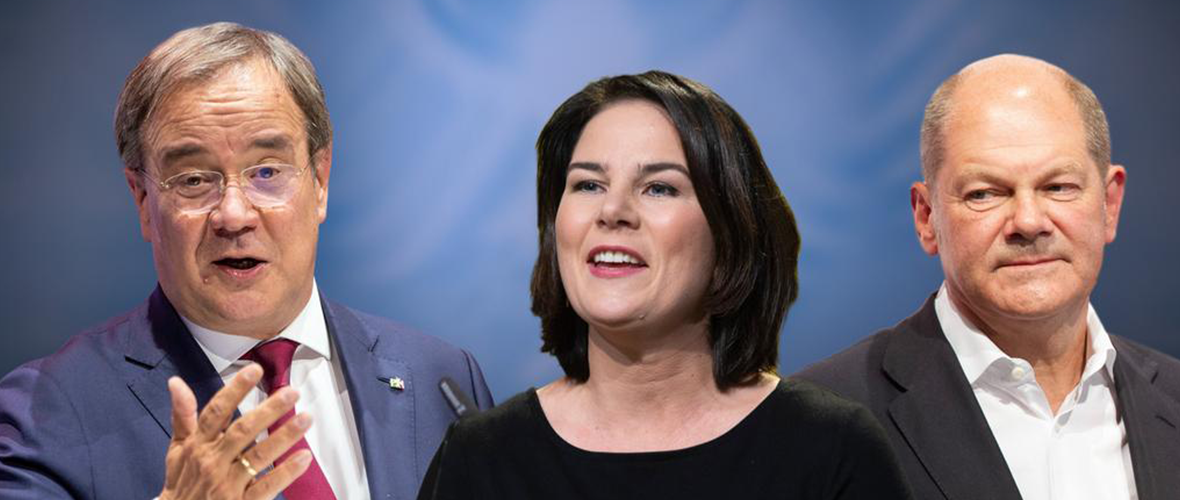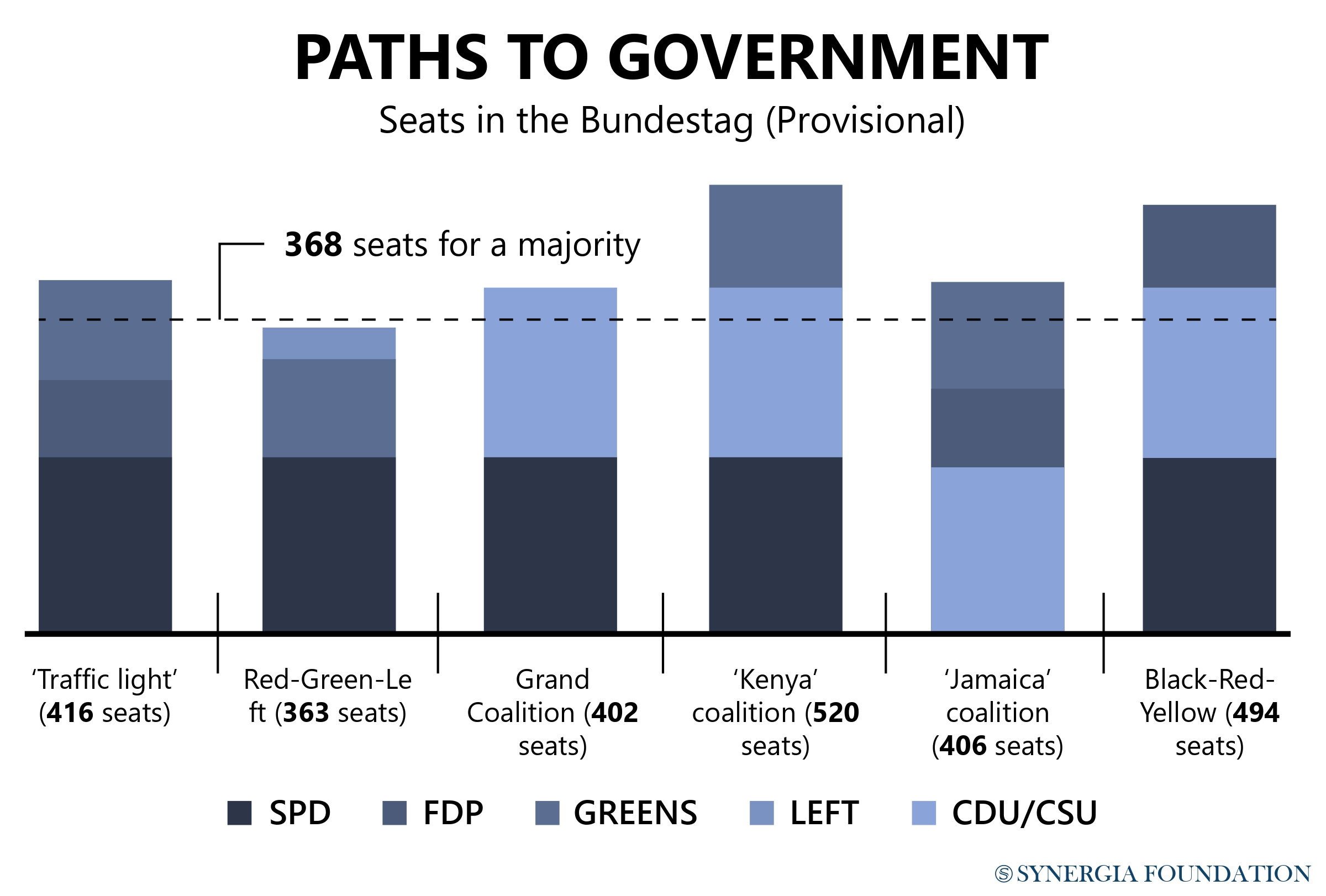The Traffic-light Coalition
October 19, 2021 | Expert Insights

The recently concluded German elections are momentous for many reasons. For one, they signal the definitive end of the Merkel era, a political epoch defined by the Chancellor’s cautious, pragmatic, occasionally ruthless approach to geopolitics and the economy. Secondly, these elections have broken a binary power status quo between the conservative CDU (Christian Democrats) and the left-wing SPD (Social Democrats) that has existed since World War II.
The SPD have claimed 206 seats and 25.7 per cent of the votes, CDU-CSU (CDU’s political partner in Bavaria) have 196 seats with 24.1 per cent of the votes, the Green Party has 118 seats, and 14.8 per cent of the votes, and the FDP have 92 seats and 11.5 per cent of the votes. The SPD, Green Party and FDP are currently in their second round of negotiations to form what people are calling the ‘traffic-light coalition’. SPD leader Olaf Scholz is the touted favourite to be Germany’s new Chancellor.
HOW THE YOUNG VOTED
Those under 30, while constituting a modest 14.4 per cent of the German electorate, nevertheless helped sway the status quo into a more fragmented parliament. Young people’s voting patterns in the recent German election show a preference for the Green party and the FDP, the latter of which has surprised many experts. Even as pundits are wondering which political party will be able to capitalize effectively on the fomenting discontent in Germany, especially in the wake of the COVID-19 pandemic, it is evident that the classically liberal messaging of the FDP has found favour with this demographic. If ignored or side-lined by the leading parties, there are concerns that young voters may turn populist and vote for the far-right parties such as the AfD (Alternative for Germany), which gave a poor showing in this election.

THE VICISSITUDES OF THE FDP
The FDP has, over the years, positioned itself as the liberal 'party of business', championing free markets, individual rights and limited government. Despite years spent facing the threat of impending irrelevance, they have experienced an unlikely revival during the COVID-19 pandemic, during which they made full use of their powers as the opposition to question the government’s restrictions on people’s freedoms. The party’s leader Christian Lindner has given many speeches to this effect. “After a year of the pandemic, the time has come for us to free ourselves from this spiral of fear and closures,” he said recently.
The deputy leader of the FDP, Nicola Beer, has also issued a statement saying, “After this pandemic, we’re going to need an economic miracle that can only unfold in an environment of innovation and less bureaucracy. We want to unleash people's potential, and in order to do that, you have to make more space for new ideas and technologies instead of increasing tax and regulatory burdens." These classically liberal ideas have received a new fillip in light of the growing discontent amongst the citizenry, especially those who have been economically impacted by the lockdowns.
Economic Imperatives vs Environmental Concerns
In the likely event of a Traffic-light coalition, it remains to be seen how the three parties will strike a balance between their political agendas. The Green Party, in its election manifesto, has made commitments to create a Climate Ministry with sweeping veto powers. It has also pledged to honour the Paris Agreement’s decree on capping global warming at 1.5 degrees celsius. More radical Green Party members fear a dilution of the party’s goals as a result of coalitions.
As the parties continue their negotiations, party officials have said that there are differences of opinion on a number of issues, especially relating to finance and the environment. If the traffic-light coalition comes to power, it will be interesting to note how the government synthesizes the Greens’ radical environmental agenda with the FDP’s interest in digitalization, innovation and limited government. The results show clearly that both messages are capable of appealing to young people.
Experts have pinpointed the weakening of an international liberal consensus, ever since the rise of populist governments in a number of countries. As a case in point of this weakening, the Democratic party in the USA is currently being torn apart in two different directions. New, insurgent members called the ‘Democratic Socialists’ favour radical agendas such as the Green New Deal, which face irrevocable opposition from centrist Democrats, fiscal conservatives, and libertarians because they disagree with the sweeping expansions of state power. The unfolding political situation in Germany could reveal possibilities of finding common ground between economic imperatives and environmental concerns without ideological polarization.
Assessment
- Whichever coalition forms the government in Germany, it will lead to changes in the country’s policy agendas on the domestic and international front. The people have clearly indicated discontent with the status quo, which will change in the post-Merkel era.
- The German political situation offers an interesting experiment to see whether political coalitions can imagine an environmental agenda that does not rely on a radical expansion of state powers.
- While Germany’s young voters constitute a modest percentage of the electorate, they nevertheless are a barometer for political and social change. The fact that the FDP’s messaging found favour with this age demographic is proof that a new liberal consensus can be fashioned out of well-thought-out, political coalitions.








Comments